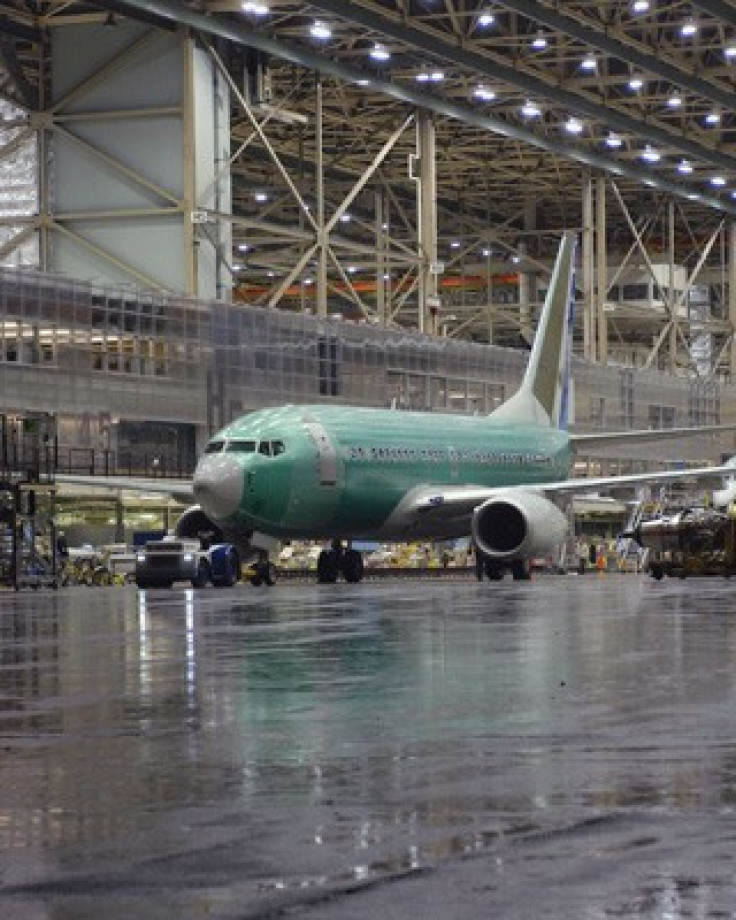Boeing in a quandary as 737 engines become obsolete; 777 deal announced

Farmborough's International Airshow is well underway today as Exhibitors and Trade Partners meet to discuss the latest in aeroplace technology and engines.
One of the biggest focus of the series of events, is the Boeing 737 engine which faces brewing competition from newer more fuel efficient engines that are being strapped on to Canadian airplane manufacturer Bombadier, and further out, Chinese builder COMAC - Commercial Aircraft Corp of China and Irkut of Russia.
All of these new planes are contesting a $1.7 trillion market for 21,000 planes over the next 20 years.
Boeing executives have said they will decide by the end of the year whether to put a newer engine on its 737 around 2015, or wait around and replace it with a new jet much later.
Airbus, who also compete with their A319 have indicated that it is likely to offer their airplane with the new engines on it - "If Airbus offers a new engine option and Boeing offers a new engine option on their 737, there is absolutely no business case for the CSeries (Bombadier) at all," said John Leahy, Airbus sales chief in response to growing orders for the alternative jets because of their 15 pct greater fuel efficiency.
However, despite this, Airbus earlier lost an order from Indianapolis-based, Republic Airways for 40 jets which they exchanged for Bombardier's in February of this year.
Boeing's current engine maker for the 737, GE/Snecma have offered their 'upgrade' option on the CFM-56 model that currently powers Boeing's fleet however a revolutionary 'geared' turbofan in Bombardier's engines made by Pratt & Whitney is what is gaining orders at this time because of its power saving.
The new engine is however, 80 inches in diameter - a problem because Boeing 737 has a closer to the ground wing.
"We'd have to work really closely with Boeing to see how bing an engine we can get and what modifications will the aircraft have to enable us to get optimum size," said Pratt and Whitney's Bob Saia, "We can still provide good double-digit performance improvement."
The issue may not lie just with Pratt & Whitney with re-engineering to cost around $1 billion to Boeing including strengthening the wings, attachment points for engine and landing gear redesign.
Still, the advantages to Boeing would be continued business from airlines such as Southwest which need around 200 new 737's over the next ten years, along with the added stability against Bombardier's growing 'niche'.
A cash cow for the company, Boeing's 737 is responsible for over 10,000 jobs at its factory in Renton, King County which produce over 400 each year.
In the meantime, it will be content with continuing orders for its 777 and 787 which debuted at the Farmborough airshow over the weekend.
Emirates which shocked everyone with a massive 32 orders for A380 superjumbos at the Berlin airshow announced a further 30 777's today although most of them are reorders that Boeing would have already counted in its books as the orders are replacements for an airplane leasing company DAE Capital in 2007.
Other deals agreed at this year's event include:
GE Capital Aviation Services, the arm of General Electric that leases aircraft, will buy 40 Boeing 737-800 planes with a list value of $3bn and 60 Airbus A320 planes with a list value of $4.5bn.
Qatar Airways placed a $122m order for three business jets from Canadian manufacturer Bombardier and Russian airline Aeroflot ordered 11 Airbus A330-300s, worth $1.7bn at list prices.
© Copyright IBTimes 2024. All rights reserved.





